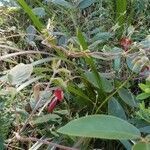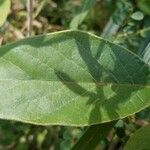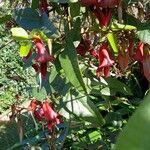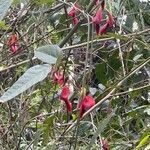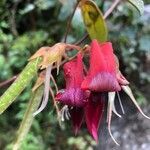A sprawling creeper that can be a climber. It has twining stems 4 m long. The stems are tough and rusty brown. The leaves are compound and have 3 leaflets but the shape can vary. The edges of the leaflets are wavy. The flowers are pea shaped and 3.5 cm long. There can be 4-12 flowers in a group. The seed pods are brown. They are 8 cm long by 12 mm wide. The pods are covered with fine hairs. There can be up to 12 seeds.
